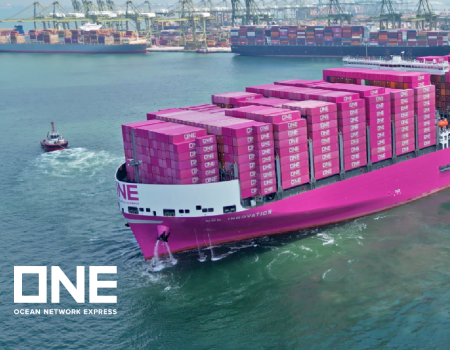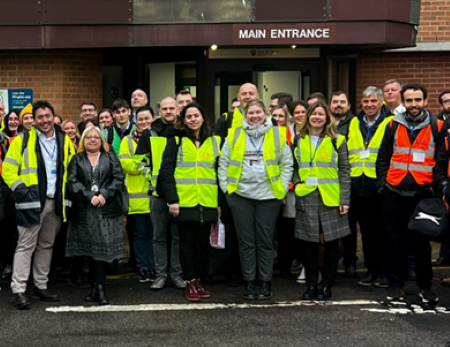 The latest details of the plight of seafarers at the hands of Somali pirates
The latest details of the plight of seafarers at the hands of Somali pirates
Written by Kaija Hurlburt of One Earth Future
The original Oceans Beyond Piracy (OBP) Human Cost of Piracy report, released in June 2011, reported statistics collected during 2010. Subsequently, there was a peak in pirate activity in early 2011 with over 700 hostages held aboard vessels off the coast of Somalia. Throughout 2011, however, pirates captured fewer seafarers, reflecting a significant drop in the success rate of pirate attacks.
This is welcome news, but the period of time that seafarers are detained is increasing. Possibly as a result of the reduced hijackings, the public’s attention to the plight of seafarers has declined as well, though there remain far too many who continue to endure captivity or face the risk of attack in the ‘High Risk Areas’ of the Indian Ocean. Additionally, complexities and sensitivities continue to surround reporting on piracy incidents,
which limit public knowledge of the plight of seafarers.
As a result, maritime piracy and its impact continue to be poorly understood by the general public. As described in the 2010 report on the Human Cost of Somali Piracy, there was scant official information previously available to the public on pirates’ treatment of hostages during captivity. This
lack of publicly available data prompted the formulation of the Declaration Condemning Acts of Violence Against Seafarers (the Washington Declaration).
The Washington Declaration commits flag state signatories to submit reports on seafarer welfare during captivity to the International Maritime Bureau (IMB). As of June 2012, four of the largest flag states—Liberia, the Marshall Islands, Panama, and the Bahamas—have signed on to the document.
The intent of the declaration is to provide a reliable and anonymised resource of information for organisations seeking to help seafarers who have either been subject to pirate attack or who are at risk of attack. This joint OBP/IMB report is broken into two sections. In the first section, OBP presents the types of crimes committed by pirates, the rates of mistreatment, and the hostage and pirate casualties in 2011.
The analysis is based on a review of publicly available documents. The figures describing the number of people attacked by pirates include seafarers aboard vessels as reported by official sources including the IMB, European Union Naval Force (EU NAVFOR), and the US Navy’s Office of Naval Intelligence (ONI), with a few exceptions for incidents reported by open sources.
It is strongly suspected that there are many others, especially local fishing vessels and dhows, which are attacked but not typically reported. OBP used a combination of official sources and open media sources to determine these rates.
In the second section, the IMB begins with a general overview of Somali piracy. It then describes the treatment of hostages in 2010 and 2011 based on reports from 23 of the 77 vessels held by pirates in that period of time. The information contained in this section is the result of the Washington Declaration and is drawn from reports submitted to the IMB by flag states, ship owners and operators, seafarers of ships hijacked and released by Somali pirates, as well as the Maritime Piracy Humanitarian Response Programme (MPHRP). Due regard is given to the sensitivities of
the identities of the seafarers, vessels, owners, operators, and other parties involved in each hijacking case; as such, the information on
the treatment of the hostages is presented in an aggregated and anonymous format.
Analysis of the Human Cost of Somali Piracy in 2011
Piracy as defined in the United Nations Convention on the Law of the Seas is:
(a) any illegal act of violence or detention, or any act of depredation, committed for private ends by the crew or the passengers of a private ship or a private aircraft, and directed:
(i) on the high seas, against another ship or aircraft, or against persons or property on board such ship or aircraft;
(ii) against a ship, aircraft, persons or property in a place outside the jurisdiction of any State;
(b) any act of voluntary participation in the operation of a ship or of an aircraft with knowledge of facts making it a pirate ship or aircraft;
(c) any act of inciting or of intentionally facilitating an act described in subparagraph (a) or (b)1. (see full report)
In order to illustrate the human cost of Somali piracy, the report looks at piracy as a series of violent crimes against seafarers and other victims. As such, the report considers the specific crimes committed by members of pirate gangs including:
1) assault,
2)kidnapping, and
3) murder.
Data includes all such crimes committed by Somali pirates regardless of whether the crime occured on the high seas, in territorial waters, or on land.
The first part of the report assesses crimes committed by pirates in 2011. These were committed against seafarers transiting the High
Risk Area in 2011 who were on ships that were fired upon, boarded, or hijacked; seafarers taken hostage in 2010 but still held in 2011;
sailors aboard personal yachts attacked by pirates; and people on shore, including humanitarian aid workers and tourists, who were
kidnapped and held for ransom.
3,863 seafarers were assaulted by pirates during the initial stages of an attack by firing weapons including assault rifles & rocket-propelled grenades (RPGs).
968 seafarers came in close contact with armed pirates aboard their vessels. 413 (44%) of those who came in close contact with pirates were rescued from citadels by naval forces after waiting for hours (and in some cases days) often as pirates fought to breach the safe room.
1,206 individuals were held captive in 2011 by pirate gangs. These included: a 555 seafarers who were attacked and taken hostage in 2011
645 hostages captured in 2010 that remained in pirate hands in 2011 including: a 26 hostages have been held for over 2 years
123 hostages have been held for over 1 year
6 tourists and aid workers
35 hostages died in 2011:
8 were killed by pirates during the attack or after being taken captive a 8 died from disease or malnutrition caused by lack of access to
adequate food, water, and medical aid
19 died during rescue efforts by naval vessels or attempting to escape, the majority of which were being used as human shields by the pirates
The hostages held in 2011 predominately came from non -OECD countries, especially from the Philippines (17%), China (9%),
and India (8%). Only 7% came from OECD countries.
It is estimated that 111 pirates were killed in 2011 based on data from open media sources:
78 died in direct encounters with naval forces
3 died in clashes with Puntland security forces
30 died in fights with other pirates over ransoms and hostages
The full impact of Somali piracy on seafarers, fishermen, sailors, aid workers, and tourists cannot be wholly assessed due to a lack of
complete reporting on the issue. Not all vessels reported equally to every official source, leading to differences in the numbers reported
by the IMB, EU NAVFOR, ONI, and Oceanus, which were the primary resources for this section of the report. OBP relied heavily on the numbers reported by the IMB, but also cross-checked these numbers against vessels reported by the other three sources, some of which were additional.
Additionally, there are many areas where the numbers listed on piracy attacks and crimes are underreported. There are many local
dhows and fishing vessels that are fired upon or hijacked without notifying the UK Maritime Trade Operations (UKMTO), Maritime
Security Centre – Horn of Africa (MSCHOA), or the IMB.
Media stories about naval vessels rescuing these dhows while they are acting as mother ships, such as the US Navy’s rescue of an Iranian
dhow in January 2012 indicates that numerous dhows are taken by pirates for use as mother ships, with little regard for the well-being
of the crews. The lack of reporting on these vessels inhibits public understanding of the degree of violence faced by all fishermen and
seafarers.
Although the number of hostages taken in 2011 decreased, the violence faced by seafarers, both those unfortunate enough to be captured, as well as the thousands of seafarers who transit through the High Risk Areas continues to grow. A disconcerting trend has seen certain hostages separated from their vessels and taken ashore, or denied freedom when a ransom is paid because of their nationality.
The dangers for the “High Risk Hostages” are most concerning, both because of the violence they face and the uncertainty over when, or if ever, they will be released. The risk has also expanded to affect tourists and humanitarian aid workers who have become victims of Somali pirate gangs. Additionally, growing violence between pirate gangs has adverse effects.
In 10% of the reported cases, hostages were subject to extreme physical and psychological abuse which has nearly driven some seafarers to suicide and others to long-term trauma after their release from captivity. Furthermore, the families of these hostages similarly face considerable anxiety and often financial hardship during such an experience.
They have limited means of support in the traditional labour-producing countries of the world. Despite the extensive crimes they commit, Somali pirates are rarely held to account. The purpose of this report is to investigate and detail the suffering of seafarers and, where available, their families as a result of Somali piracy.
The results should be used to better prepare our seafarers for this unfortunate eventuality should it befall them. The report also serves to remind all stakeholders including Governments, industry, and international organisations involved in maritime trade that the plight of the hijacked seafarer is not an acceptable status quo.
There can be no room for complacency despite the reduction in some of the numbers. Although fewer hostages were captured in 2011, the violence faced by seafarers who transit through the High Risk Area has not subsided.
All hostages were subject to deprivation and unacceptable conditions when held by Somali pirates. In extreme cases of violence and depravation, 149 hostages were held for more than a year, 35 hostages were killed, and 60 high risk hostages continue to be held without a clear means of securing their release.
To best address these situations and provide resources to the victims, there is a continued need for full and transparent reporting on the violent crimes committed by pirates on the seafarer.
Seafarers move more than 90% of world trade. Their silent but invaluable role needs to be acknowledged, at the very least, by pursuing all possible means to bring Somali piracy to an end.
For further information or to download a copy of the full







